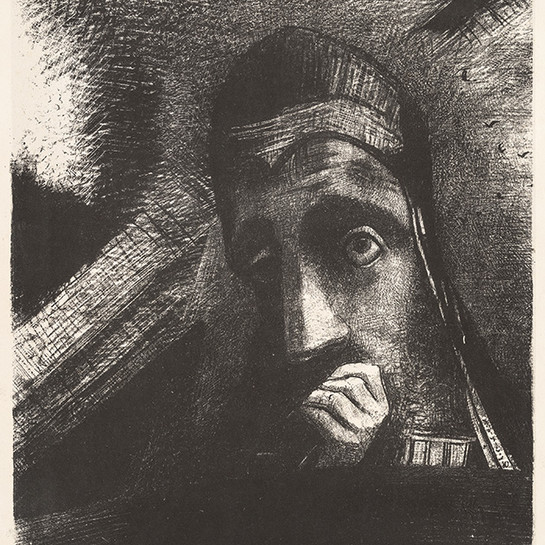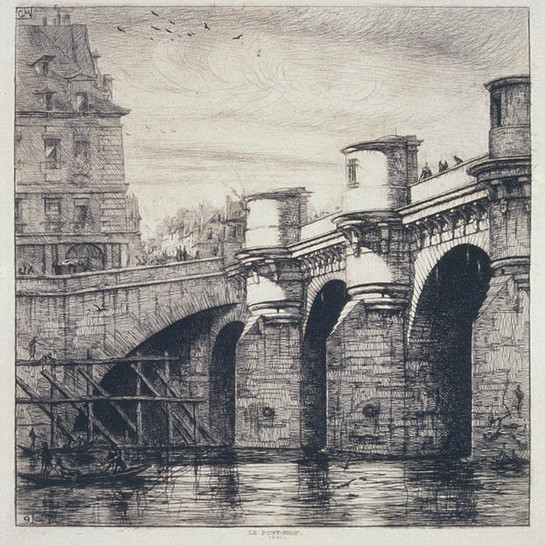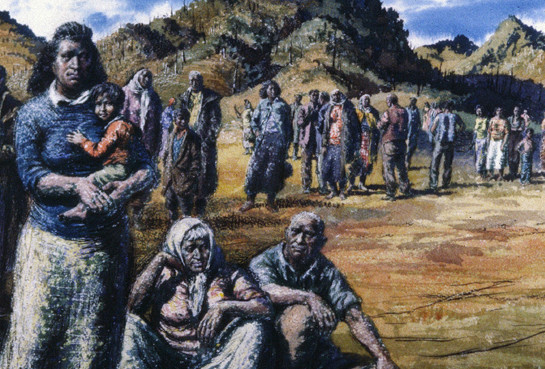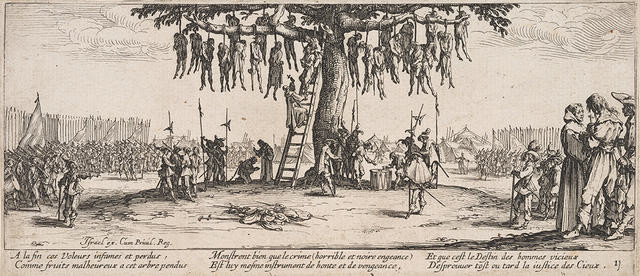Jacques Callot
France, b.1592, d.1635
La pendaison
The gallows tree
- 1633
- Etching
- Purchased, 1986
- 82 x 186mm
- 86/43
Location: Burdon Family Gallery
Tags: clergy, crosses (visual works), deaths, drums (membranophones), executions (events), flags, ladders, monochrome, musical instruments, people (agents), soldiers, tents (portable buildings), text (layout feature), trees, wars, weapons
In 1633, Louis XIII’s France invaded the Duchy of Lorraine, ravaging its capital Nancy and the surrounding countryside. Callot was born in Nancy, and published his eighteen etching series The Miseries and Misfortunes of War later that year in response to these shocking events.
(Out of Time, 23 September 2023 – 28 April 2024)
Exhibition History
In 1633 France, under Louis XIII, invaded the Dukedom of Lorraine and attacked its capital, Nancy. The countryside was over-run, pillaged and burned by marauding French soldiers. The Gallows Tree shows the fate of some of those who enlisted to defend their land. The etching is plate 11 in a series of 18. They were Jacques Callot’s pungent comment on the effects of this invasion. The images are deliberately brutal and their potential to shock is not diminished by their tiny scale nor by the intricacy of the detail. Callot was born in Nancy where his landowner father was the Master of Ceremonies to the Duke of Lorraine Nancy. In 1608, aged 15, he took up an apprenticeship in Rome. In 1612 he moved to Florence and was employed by Cosimo 2nd de Medici, Grand-duke of Tuscany. Callot returned to Nancy in 1621. The Miseries and Misfortunes of War etchings were first published in Paris in 1633. This plate is from a smaller, later version published in 1636. (Label date unknown)
This image comes from the Miseries of War set of prints which was first published in Paris in 1633 by Callot's friend Israel Henriot. The soldiers fighting on both sides of the conflict are often treated as harshly as the peasants whose lives and lands they ruined in the ravages of the "Thirty Yerars War". In the Gallows Tree, which is Plate 11, the cavalry and the lancers of the victorious army form a powerful backdrop to the spreading oak tree which is turned into a vast gallows. Mercenary soldiers, who were evidentially accused of theft, and about to be executed, talk with the robed friars, make their confession and sign their wills before being dragged up the ladder to meet their fate. The inscription at the base reads "Finally, those infamous and abandoned thieves, hanging from this tree like wretched fruit, show that crime (horrible and Black species) is itself the instrument of shame and vengeance, and that it is the fate of corrupt men to experience the justice of heaven sooner or later". "The Miseries of War" was republished the year following the artist's death in 1635, in a smaller publication and this plate is from this later edition. (Label date unknown)
![Andreas Cellarius Hypothesis Ptolemaica Sive Communis Planetarum Motus Per Eccentricos Et Epicyclos Demonstrans [The Ptolemaic Hypothesis or Common Representation Demonstrating the Planetary Motions through Eccentrics and Epicycles] 1661. Hand-coloured engraving. Collection of Christchurch Art Gallery Te Puna o Waiwhetū, William A. Sutton bequest, 2000](/media/cache/05/97/05970cdff0f6b3264062d69bf2aa90f5.jpg)



